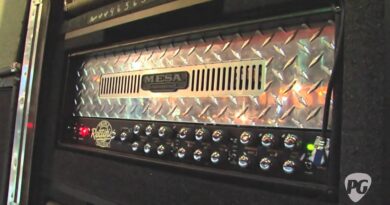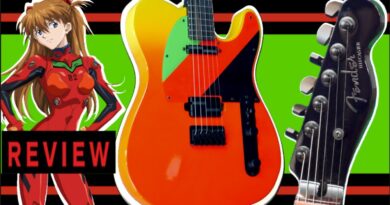REVIEW: The new Fender Standard Stratocaster

The new Fender Standard Series is an Indonesian-made successor to the old Standard Series, which was made in Mexico and was superseded by the Player and Player II Series. Much could be made of the current controversy over the Standard Series because of course people will argue about anything and everything online, but we’re not going to do that here. If you’re open to buying a guitar made in Indonesia, a country that has seen decades of investment by guitar manufacturers and which is producing great quality stuff, then cool, me too, guitars are the best! If not, that’s your business and nothing anyone else’s lived experience will change your mind about.
And so here we are: a new budget-priced Fender Stratocaster, not terribly unlike the previous Standards in terms of the market segment it’s pitched at and the overall specs, and providing an entry point several hundred dollars below the previous most affordable on-ramp, the Player Series.
The new Fender Standard Stratocaster isn’t trying to replicate any specific year’s Strat model. Instead it’s a carefully considered encapsulation of elements to create the perfect default Strat for those shopping in this price bracket.

We have a Poplar body with gloss finish in a choice of four colours – Candy Cola (the model on review) and Olympic White with Maple fretboards or 3-Colour Sunburst and Aqua Marine Metallic with Indian Laurel. The pickups use Ceramic magnets like the old Standard series, rather than Alnico like the Player models. There are three single coils on this model, or there’s an HSS variant too. The middle pickup is reverse wind/reverse polarity in order to provide hum-cancelling options in positions 2 and 4.
The bridge is a standard 2-point tremolo with satin chrome steel block saddles that remind me of the look of the old Stratocaster Plus. The pickguard is 3-ply which I always prefer on anything that’s not explicitly trying to be a reissue of something that originally came with 1-ply.
The electronics configuration employs a slightly modded version of classic Strat wiring, with the bottom tone control wired to the bridge pickup while the other one handles the neck and middle simultaneously.
The neck features a Modern C shape with a Satin finish and 21 Medium Jumbo frets on a 9.5” fingerboard radius board. I like this choice. The tuners are fine but nothing to get super-excited about and they lack the ‘Ooh, that feels like a piece of fine engineering’ feel that you get further up the price chain. The frets are big enough to encourage bends and easy legato techniques, and the radius is curvy but not too curvy.
Yeah yeah, but how’s it play? Is it any good? What’s the deal?
Alright. First impressions: the pickups have plenty of character, and the neck and middle settings sound really nice. Glassy trebles, tight low end, enough mids to hold your own in a mix but not so much as to sound honky. The bridge pickup isn’t quite as exciting though. It’s certainly not a bad sound but it comes across as a little harsh and buzzy compared to the neck and middle selections. That’s where the modified tone control layout comes in handy. I personally prefer the traditional way in most cases (no tone control for the bridge pickup at all), but in this instance the tone control helps tame some of the hairiness of the Ceramic magnet. If this guitar has a weakness – and it’s not a failing, just a weakness – it’s the voicing of that one pickup selection, but the other pickup selections have a lot going for them. The 2 and 4 settings in particular have a really nice, almost acoustic-like zing to them without getting harsh or hollow.
The playability is flawless. The Standard Stratocaster did everything I asked it to do, even ridiculous 3-step bends on the B string, and returned to tuning pretty reliably for a non-locking trem. These arrive with the bridges set to float with a nice amount of up-bend potential, and you can definitely get away with a few Jeff Beckisms if you so desire.
The construction is right on par for a guitar in this price range. Although the fretboard edges are not listed as being rolled, they have clearly been shaped a little during the fret-finishing progress, giving the guitar a more ergonomic feel than the spec sheet might suggest. That Satin neck finish also really aids in making this guitar feel nice to play. The Candy Cola finish on the body is gorgeous, very deep and shimmery, and while it’s not the most glass-like finish I’ve ever seen on a guitar, it has a hypnotic quality that will look great on stage.
I’ve got to say, I’m seriously impressed with this guitar. It achieves everything it sets out to do, which is to be a Stratocaster that says Fender on it, for people who want something above a Squier but can’t stretch to the Player and above models. It would be a great upgrade platform further down the line with a pickup upgrade and maybe some nicer tuners. In fact, something like a pre-wired pick guard with Texas Specials or Vintage Noiselesses would be a killer idea. Ultimately though, this is a guitar that fills a gap that neither Squier nor Fender were occupying, and you owe it to yourself to get to a music store and try one for yourself.



![Rig Rundown: The Aristocrats' Guthrie Govan & Bryan Beller [2022]](https://justthetone.com/wp-content/uploads/2024/08/Rig-Rundown-The-Aristocrats-Guthrie-Govan-Bryan-Beller-2022-390x205.jpg)